Exploring Kona, Hawaii
On Thursday, we were scheduled to be docked at Kailua-Kona (Kailua Village) from 11:00 am until 8:00 pm, and our plan was to rent a car and just explore Kona district, with a coffee plantation and a historic site being the must-sees.
Sunrise off the west coast of the island of Hawaii at 06:18, from the back deck of the Celebrity Solstice.
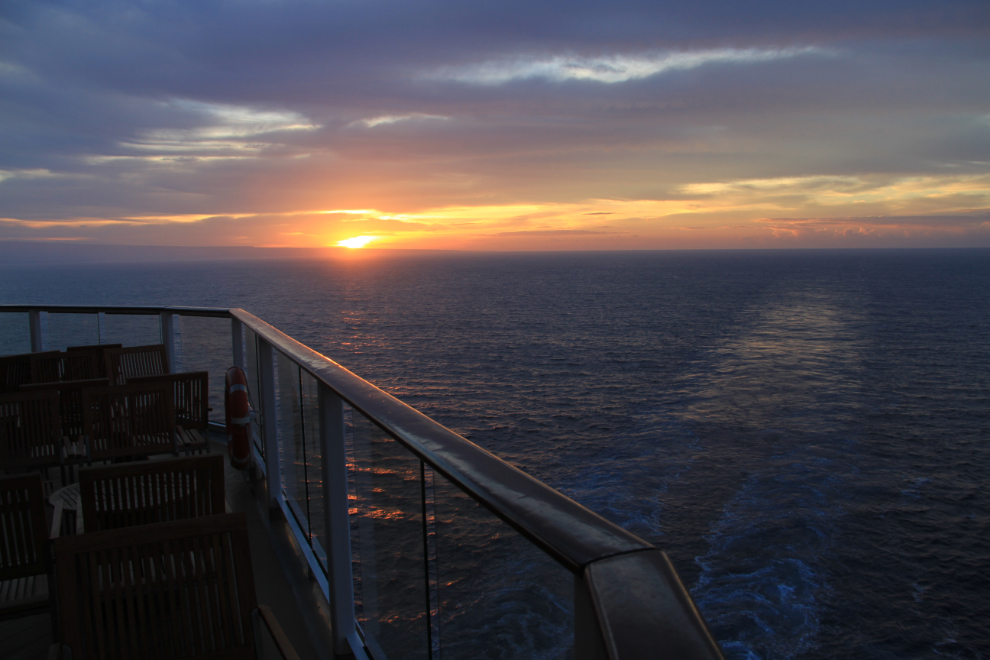
Our guide in Hilo had warned us that there could be some heavy seas to deal with at Kailua-Kona, where we would use tenders to get ashore, and he was right. What looked to me to be quite calm seas looked very different at the shoreline!
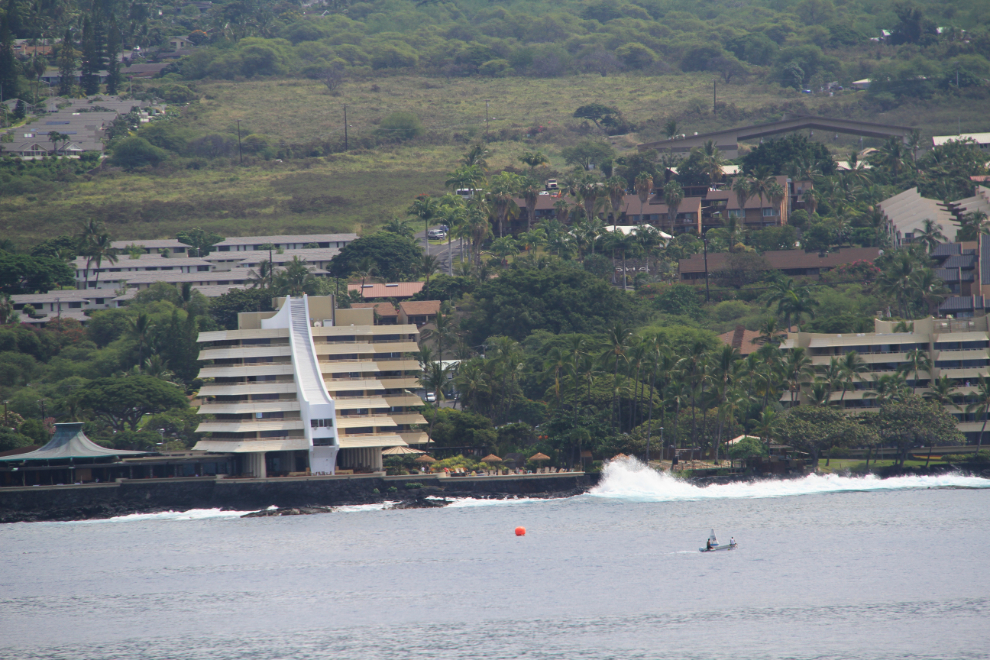
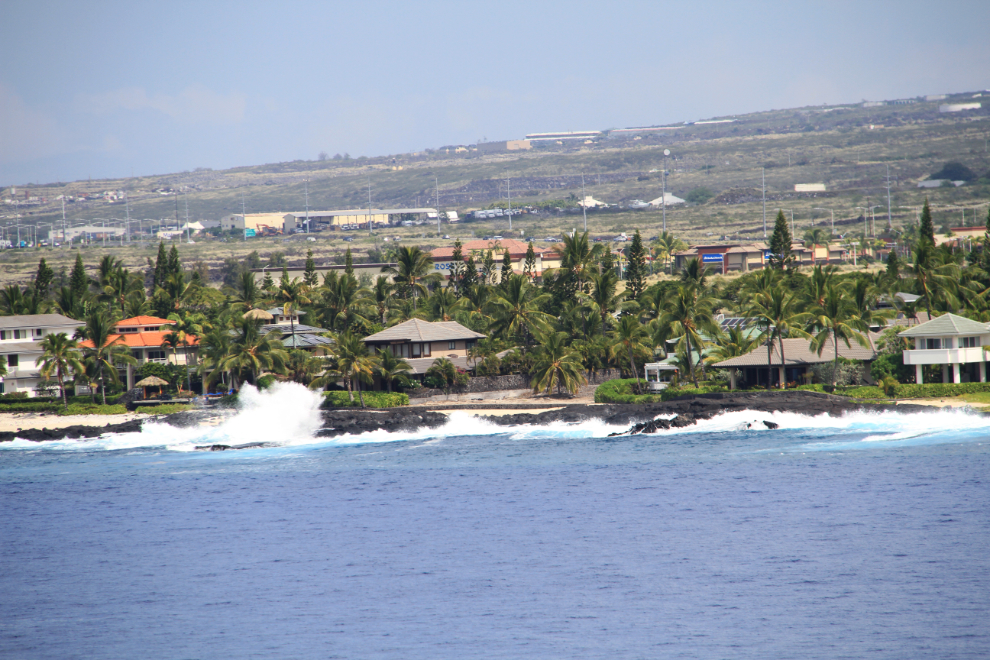
We anchored about a mile offshore just before 10:30, and a few minutes later five of the tenders were being lowered. We went to Cellar Masters on Deck 4 to get tender tickets as soon as the announcement was made to do that, but got tickets for tender #31, so a lot of people were there before the announcement.’
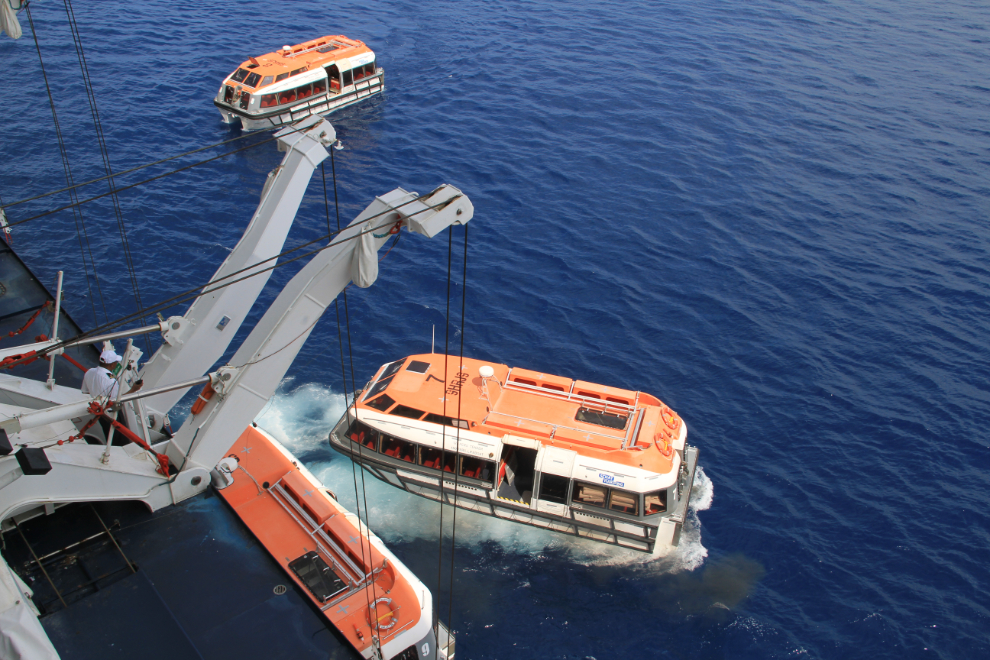
At 12:15, we finally got to board our tender, and 10 minutes later were ashore.
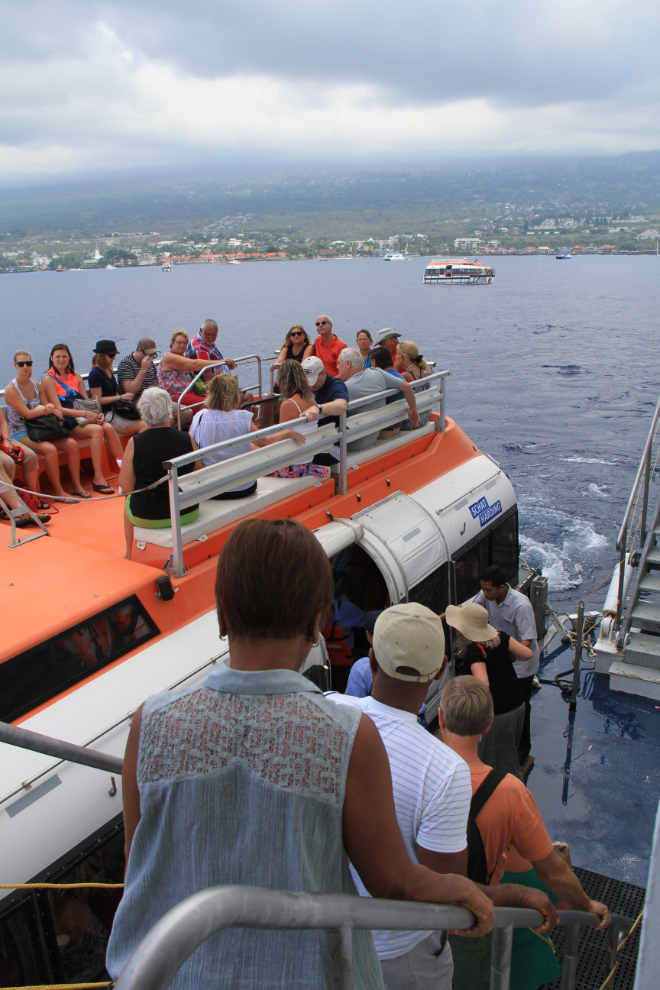
We had rented our car from Thrifty, which has an office in the King Kamehameha Kona Beach Hotel, a block from the pier. Imagine our surprise when we arrived and were told that the agent had closed up and gone home 10 minutes before, and wouldn’t be back! With people pouring off a 2,800-passenger ship, he wondered why so many of his clients had been no-shows. The hotel concierge was great, though, and found us a car at Enterprise, where we got excellent service. The lobby of the hotel was a very comfortable place to deal with the mess, at least.
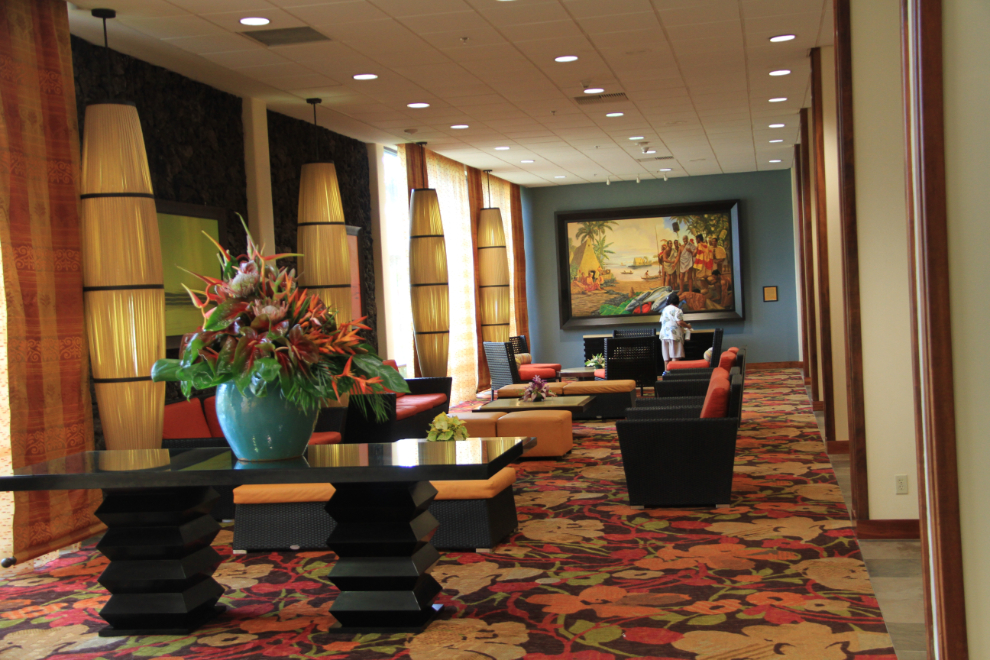
We weren’t on the road until about 1:00 pm, so our plan got modified a bit – we now wanted a coffee tour at a place that also had a restaurant. I noted a sign for Kona Joe Coffee as we drove to a place that had been recommended, but which turned out to not have food available, so went back a couple of miles. As soon as I turned into Kona Joe’s driveway, I knew that we’d like these people 🙂
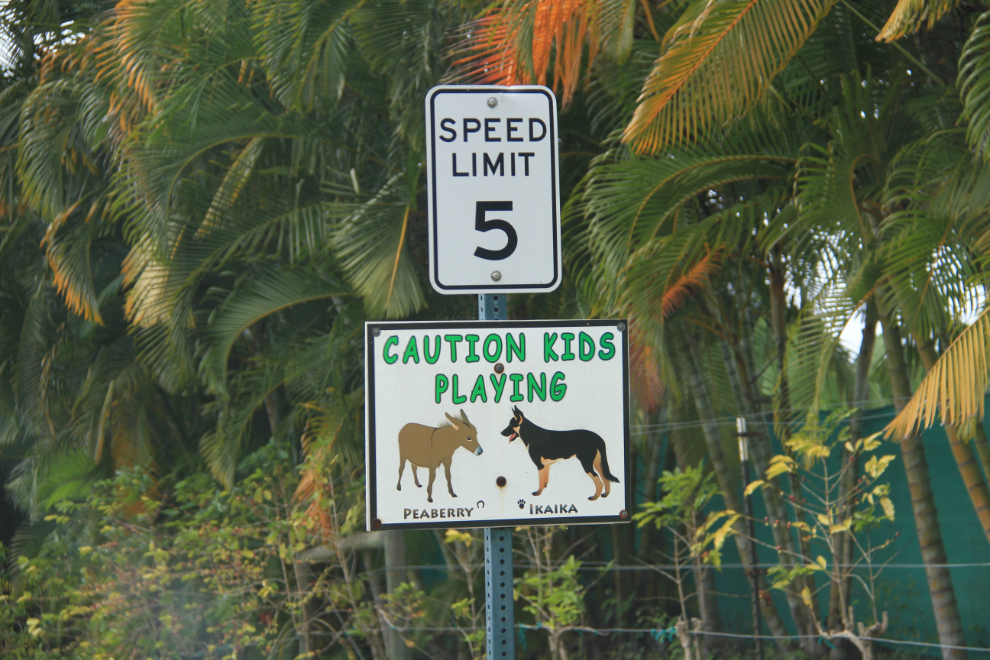
The cafe area at Kona Joe’s is lovely, and the view on a nice day would be spectacular – a thick haze made it much less so for us.
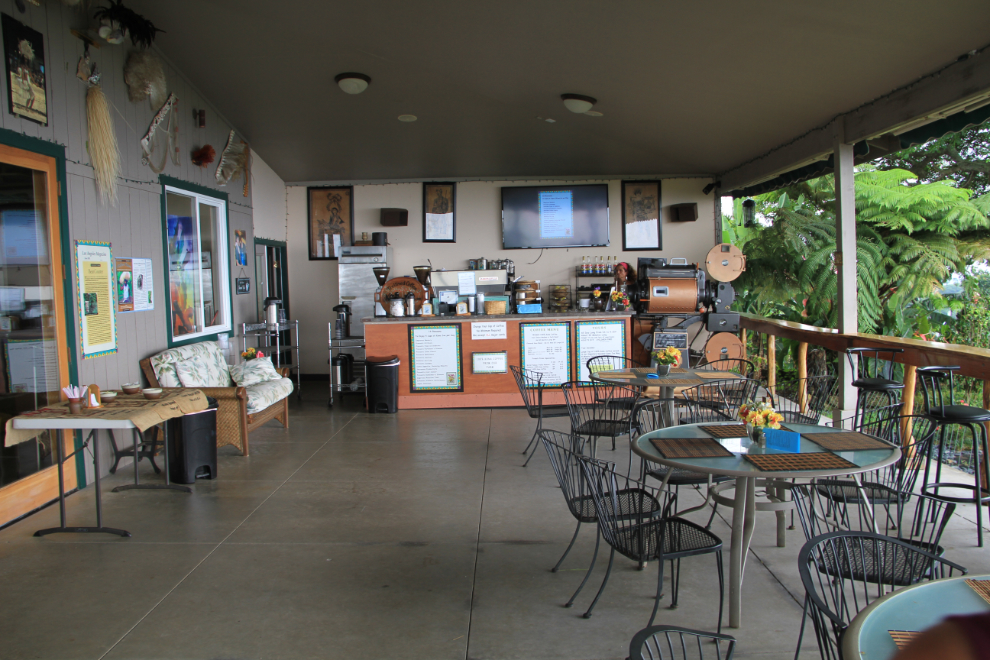
All 4 of us agreed that both the coffee and the food were amazing – and those comments are from people who had been spoiled by excellent food for over a week.
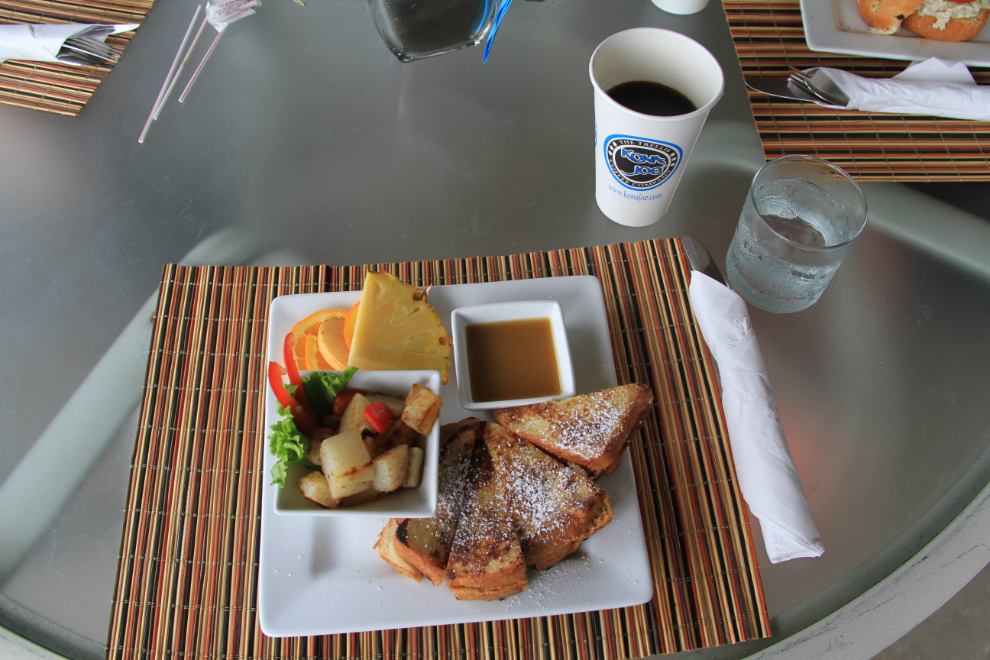
Just after 3:00 pm, we began our coffee tour with 3 other Canadians, from Saskatchewan and Alberta. Our coffee guide was Rafael, an agriculture student from Brasil. He apologized several times for his poor English, but it was excellent, and his passion for the coffee industry and specifically this company, was wonderful to see.
Kona Joe is the world’s first trellised coffee plantation – their tagline is “Coffee Grown Like Wine” because they grow it in a similar manner to grapes. Instead of a single stalk, the plant is split along trellises to increase the yield – their entire plantation is only 20 acres.
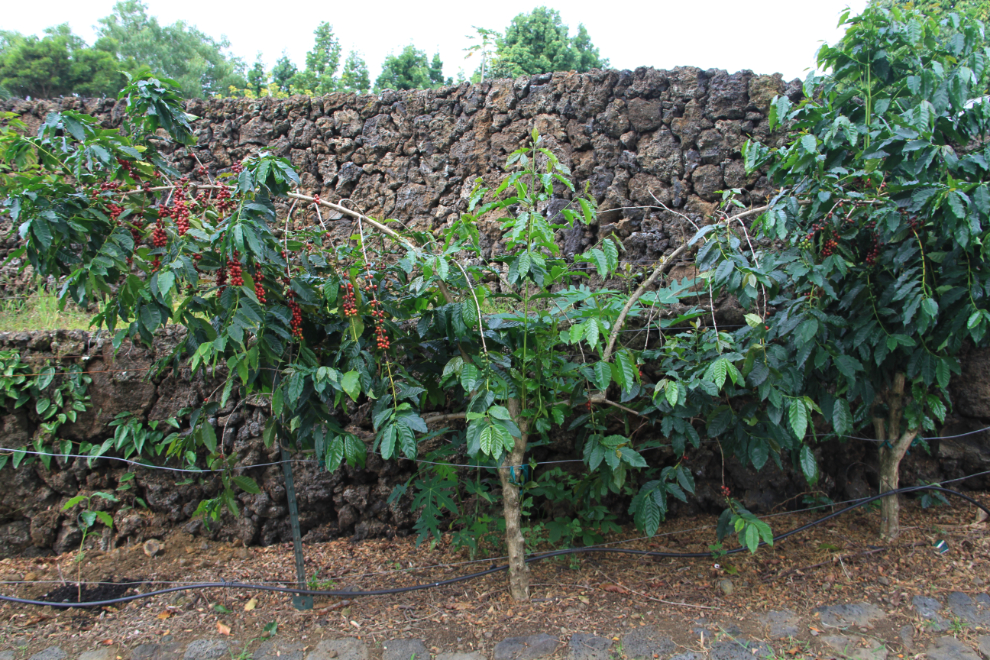
Rafael explained in great detail about the process of getting into the coffee beans. The red “cherries” (and only the red, ripe ones), are hand picked. Large coffee operations pick every bean, ripe or not, with machines – while that greatly lowers the cost of production, it also greatly reduces the quality of the coffee. Having already had a cup of Kona Joe’s coffee, I knew what he was talking about – this is not what I drink at home, unfortunately
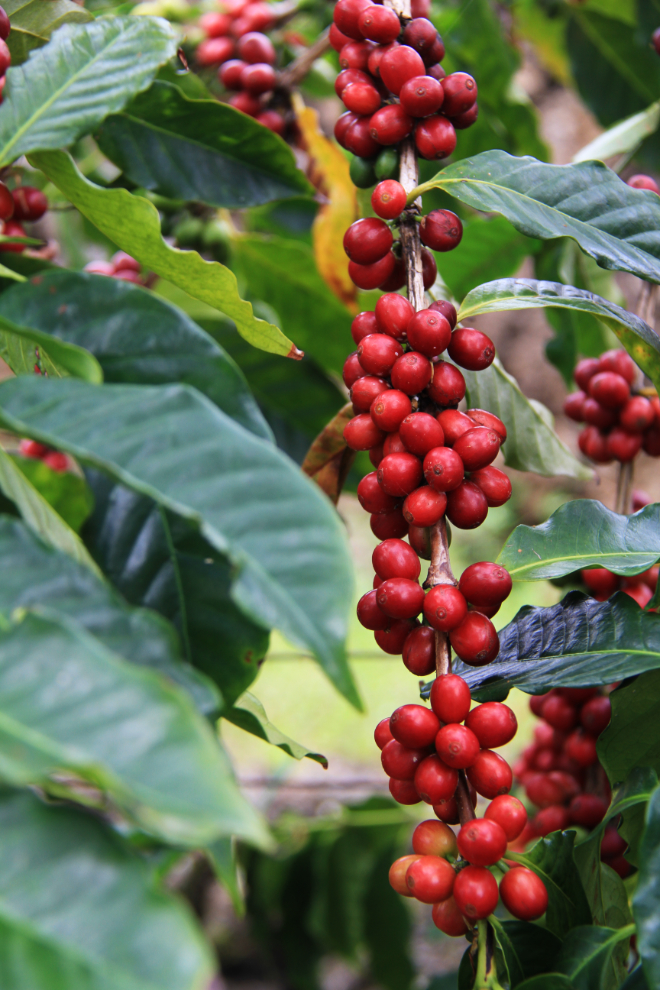
The cherries are then split open to get the seeds, which are coated with a thick, sweet oil.
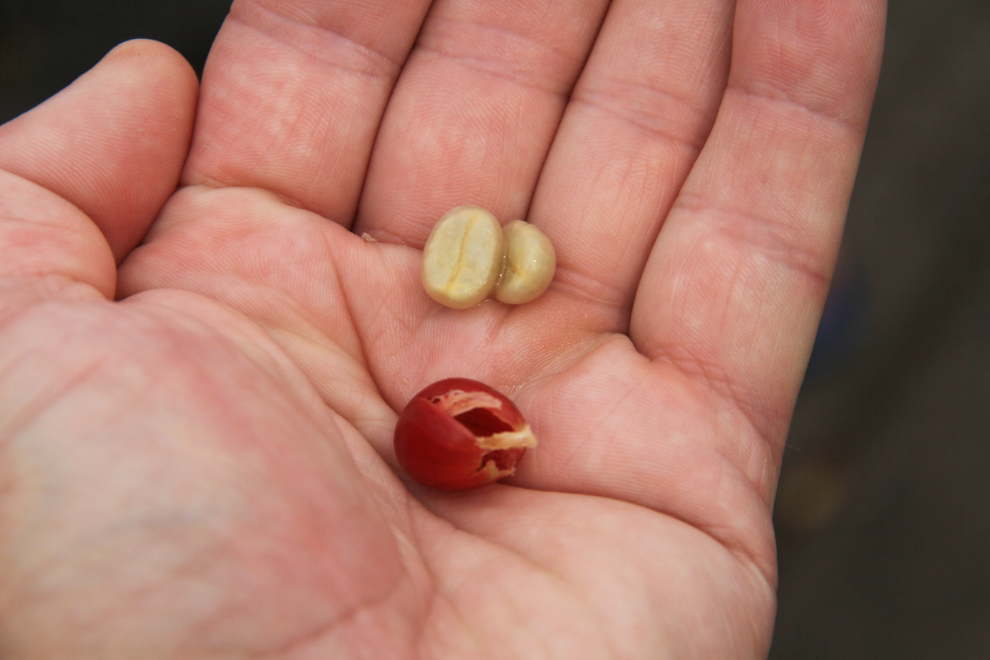
I was very surprised by the number of steps needed to get to the final product, and even the fine grading of beans for a specific type. Rafael saw qualities in the beans that I couldn’t discern.
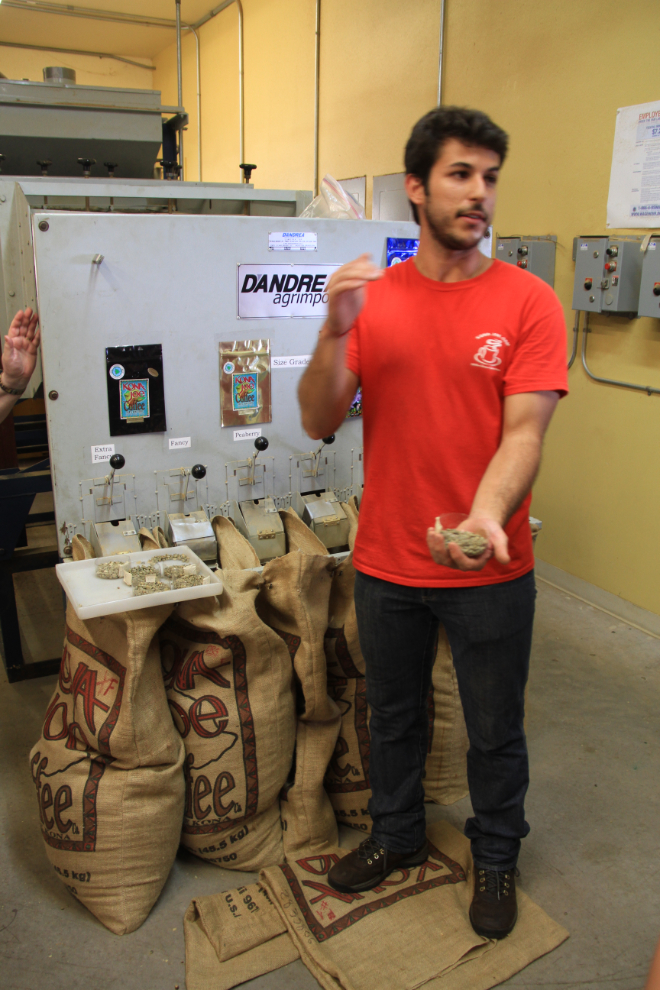
The final stop of the 45-minute tour was, of course, the store. At the time I couldn’t wrap my head around paying up to $75 per pound for coffee, but the more I think about it, the more I think that it would be nice to have a “special-occasion coffee” in the same way we do wine – we have the “homers” for our evening calm-down time, and our special occasion wines.
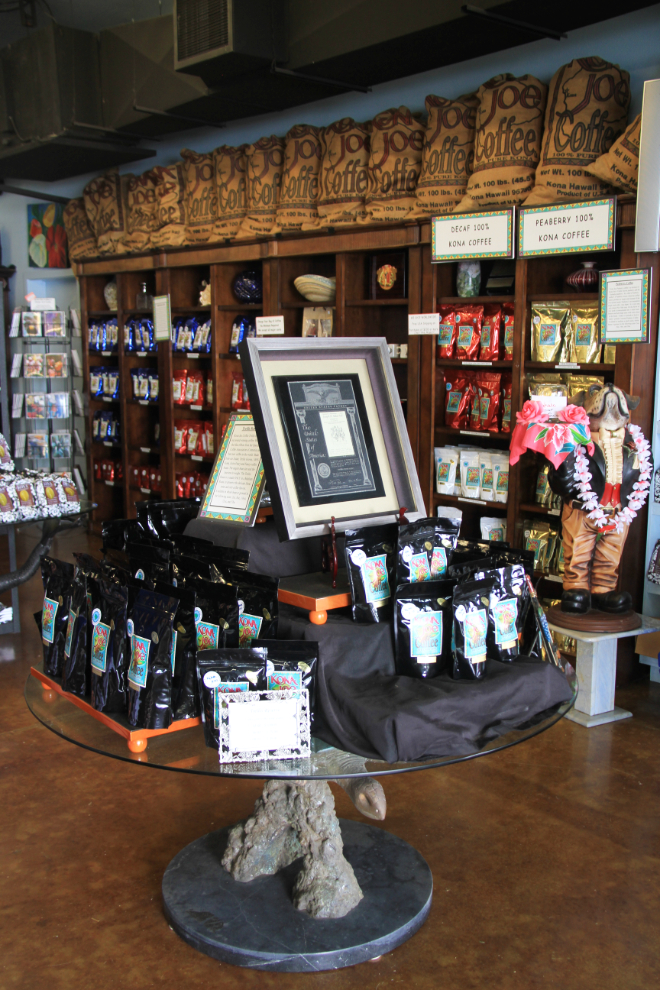
Our stop at Kona Joe’s was far longer than we had planned on, and as we left right at 4:00 pm, we were very aware that it would be dark in just over 2 hours, so we made a dash for the other must-see, “The Place of Refuge”, officially Puuhonua o Honaunau National Historical Park.
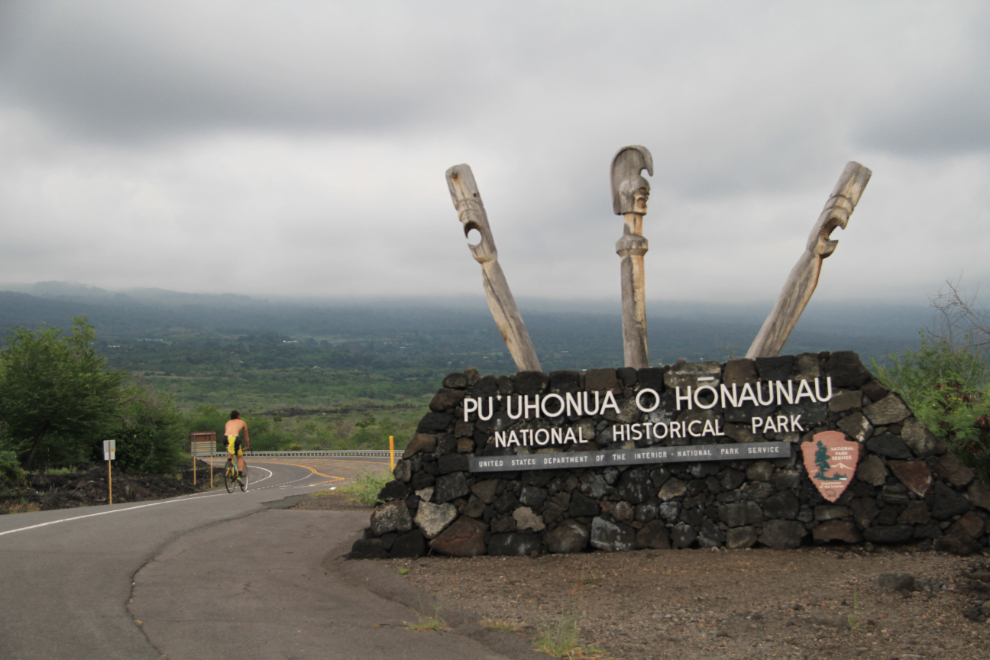
I assume because we arrived so late, the woman at the gate just waved us through – we picked up a self-tour map and started out. The Hawaii Tourism Authority summarizes the reason for this existence of this refuge: “Kapu, or sacred laws, were of utmost importance to Hawaiian culture and the breaking of kapu could mean death. A kapu-breaker’s only chance for survival was to evade his pursuers and make it to a puuhonua, or a sacred place of refuge. Once there, a ceremony of absolution would take place and the law-breaker would be able to return to society.”
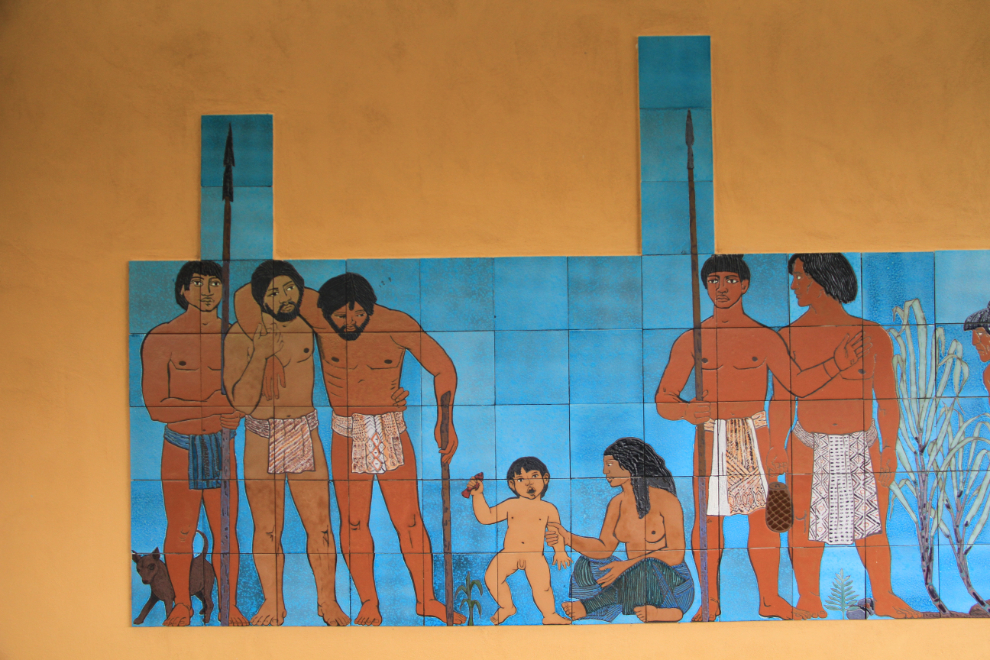
This little bay, Keone’ele Cove, was reserved for royalty. As the ali’i (chiefs) approached in their canoes, a pu (conch shell) was sounded as a warning, as it was forbidden for others to look at or even let their shadow touch the ali’i.
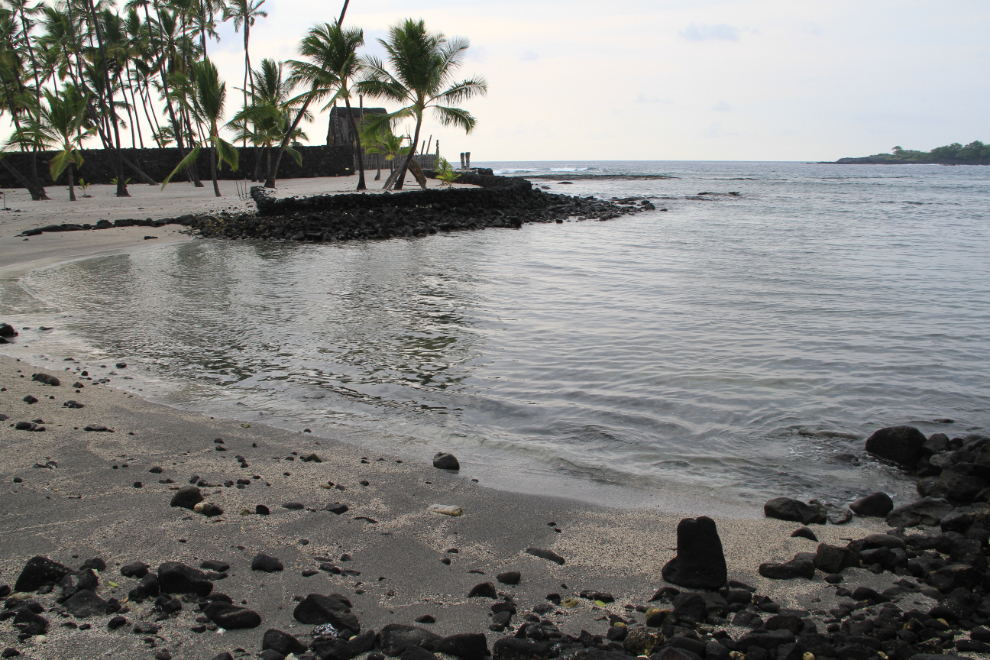
The main wall marking the boundary between the royal grounds and the sanctuary is impressive, up to 10 feet high and 17 feet thick.
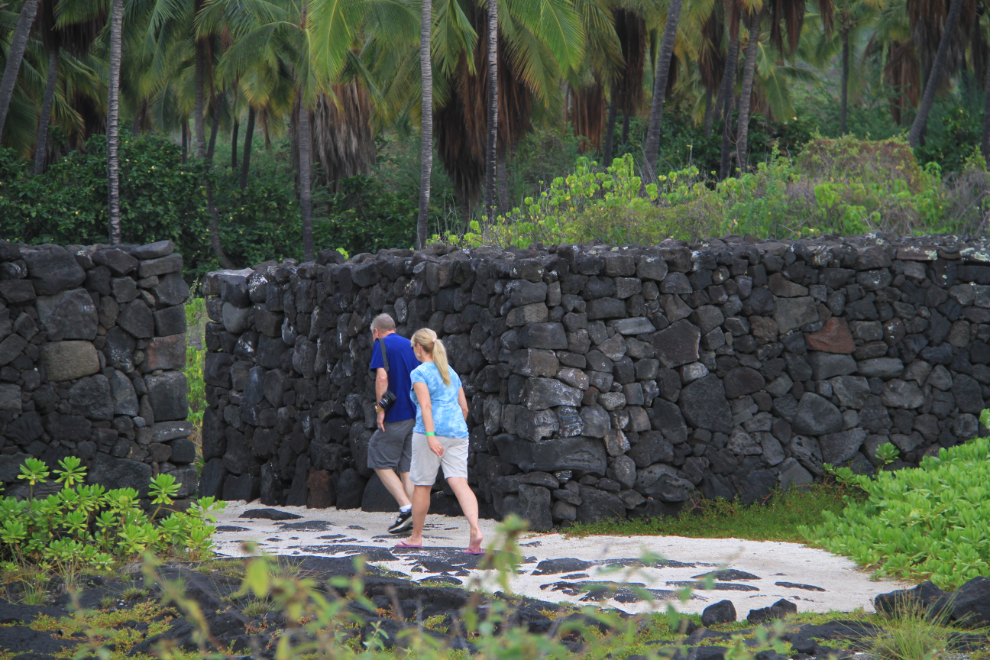
Many ki’i (carved wooden images) surround the Hale o Keawe, housing the bones of the chiefs that infuse the area with their power or mana. If lawbreakers reached this sacred place, they were safe.
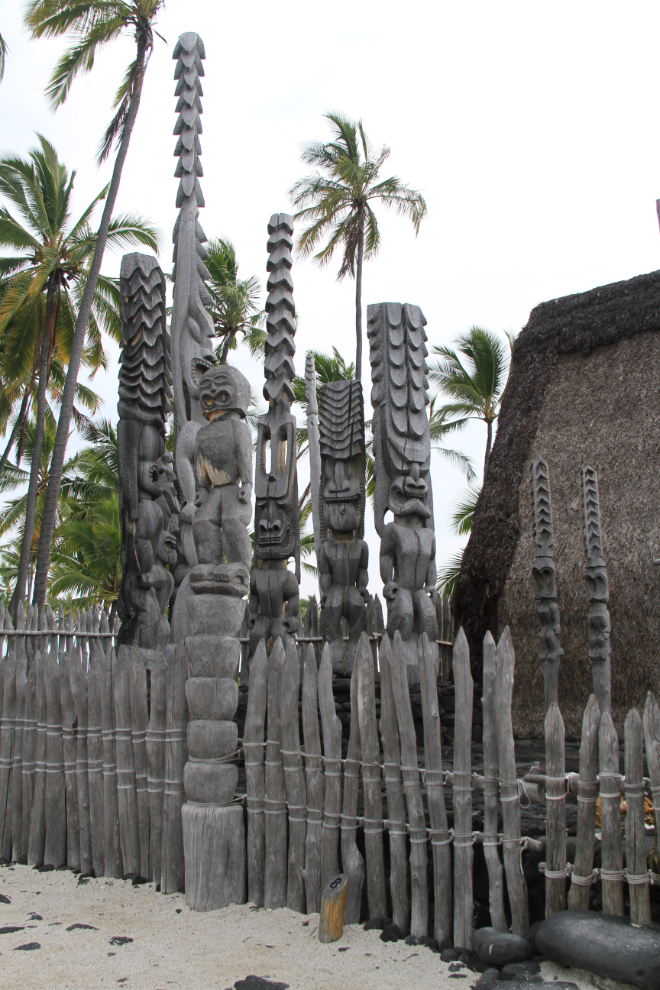
This angry-looking ki’i was unique, as none of the others had what appears to be a huge penis. I’m intrigued, but a Google search has been unsuccessful.
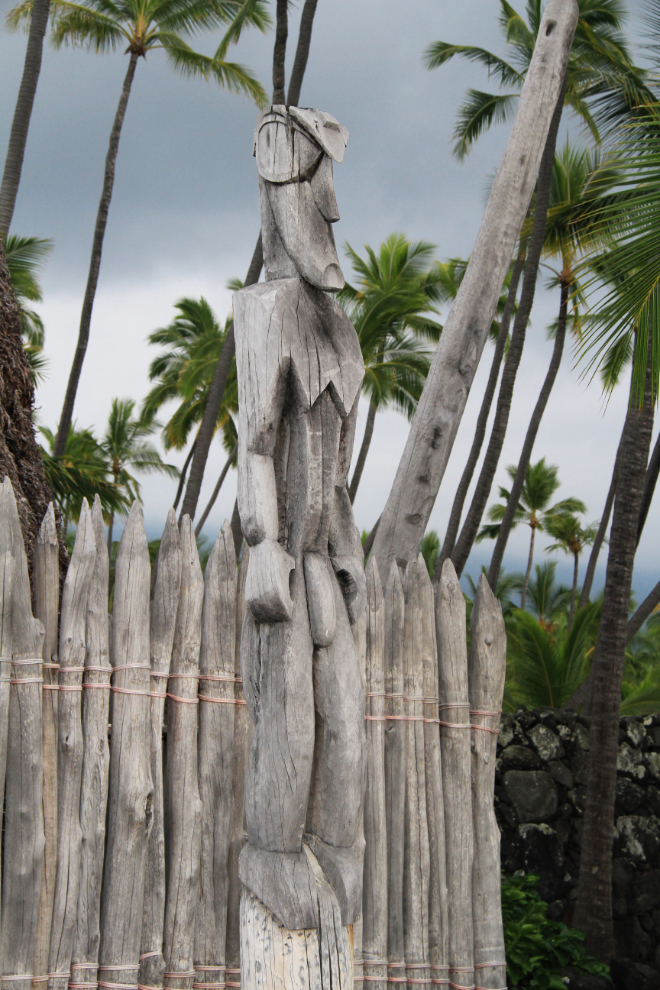
Don’t pile rocks! 🙂
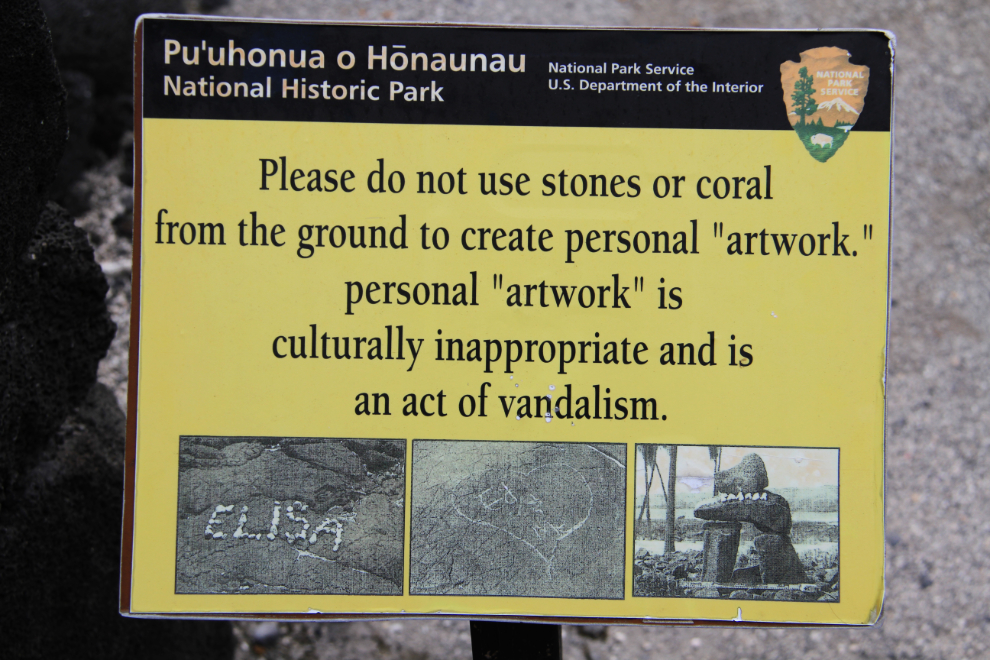
We haven’t seen many birds, but this Safron finch came quite close to us.
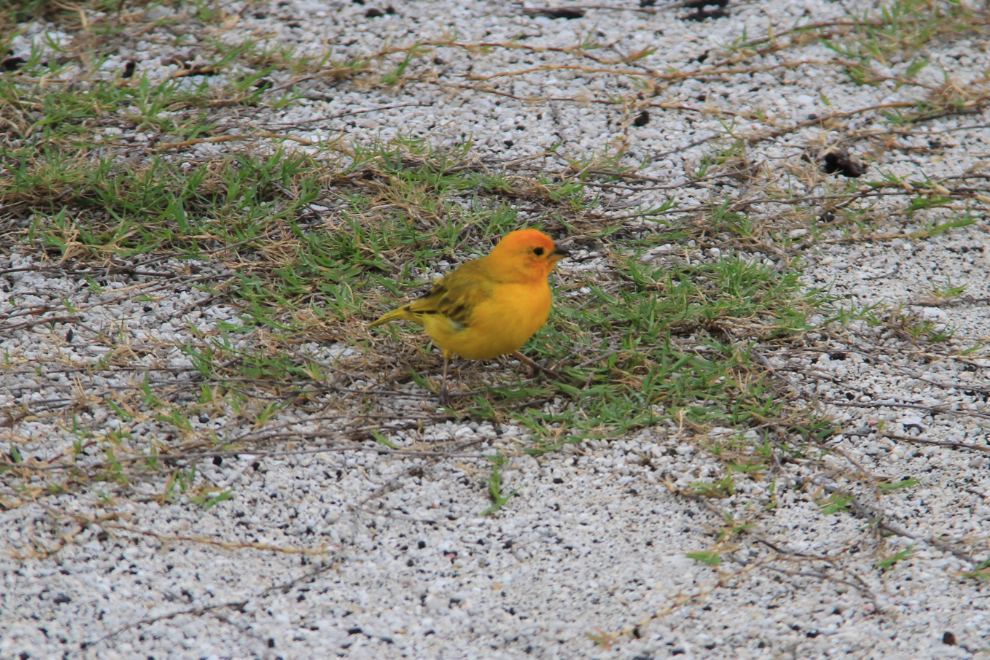
As we were leaving the park, I made one more detour down a side road that I hoped would lead to a great beach where the main wall ended. It turned out to require a walk that we didn’t have time for, but we did see this trail (upgraded for use by pack animals in 1871) that used to lead to several fishing villages. It is now called the 1871 Trail.
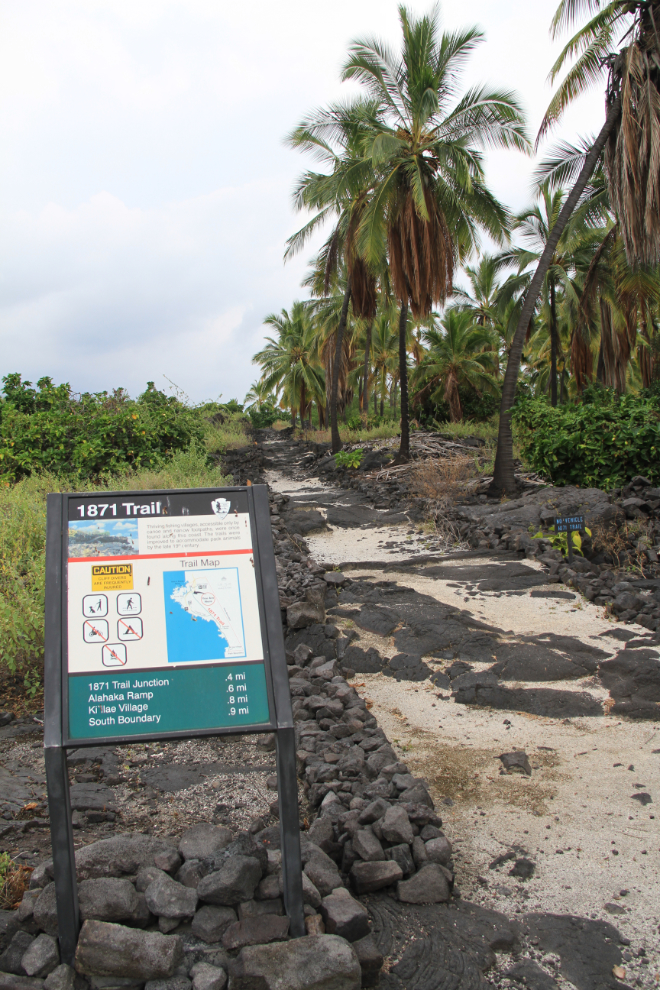
We dropped the cat back at Enterprise just after 6:00 pm, and took a taxi to the pier ($7), arriving as the sun lit our ship up.
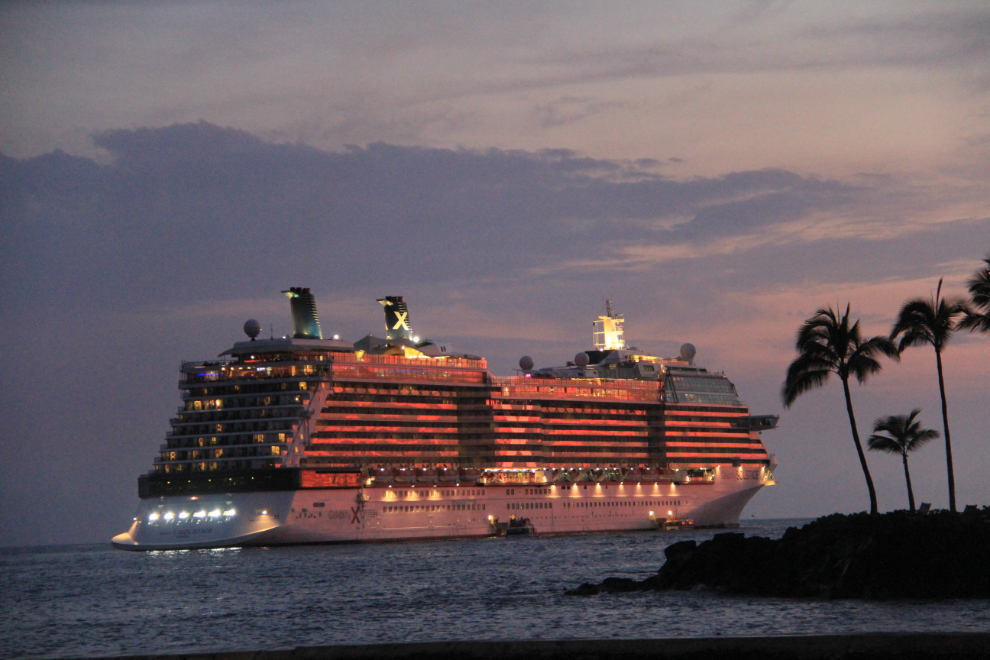
At 8:00, we set sail for Lahaina, Maui, where we’d stay for 2 days.
